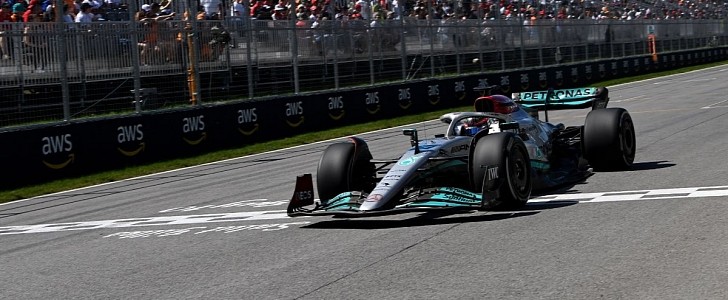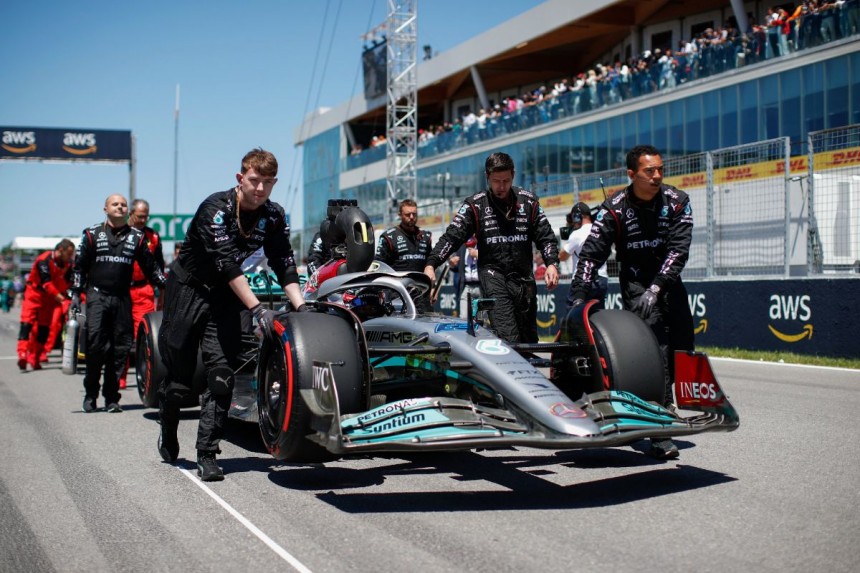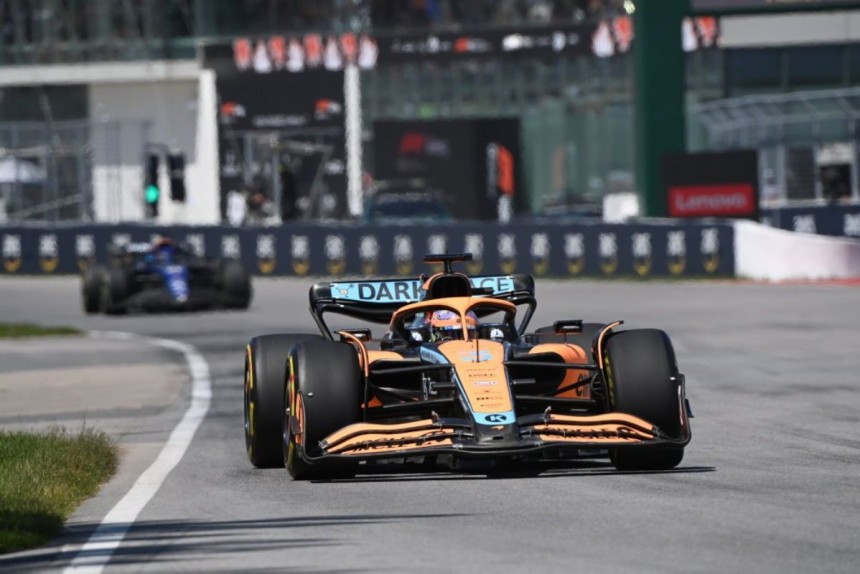We all see the "New Era" Formula 1 car bouncing around like crazy on the circuit straights. The phenomenon is called porpoising, and it's a significant issue for almost all the teams on the grid.
However, the FIA (Fédération Internationale de l'Automobile) made an investigation, and they concluded that it's actually a pretty severe safety problem. The unique traits of the latest F1 cars were labeled as a recipe for disaster. The frequency that creates the bouncing made the FIA officials believe that a severe crash could happen sooner or later.
As a result, the FIA announced a sudden set of changes on safety grounds that will force F1 teams to fix their problems. Now, let's see the consequences and why this change is necessary. For the past decades, the Formula 1 world has made giant steps ahead in the safety category with devices like the HALO or the HANS device.
We know that the new technical regulations introduced this season accentuated ground-effect aerodynamics, reviving the phenomenon of high-frequency bouncing, especially at high speeds. This was something that affected most teams to a greater or lesser extent. While others have been able to control porpoising, teams like Mercedes are having serious problems.
We saw Lewis Hamilton struggling to get out of his car no more than two weeks ago due to extreme back pains. The porpoising appears because the cars must run super low to maximize the ground effect. Besides, the new rules made the vehicles stiffer, so they are bottoming out quite aggressively, especially on bumpy street tracks.
At the driver's briefing in Azerbaijan, the problem was raised after bouncing badly on the long straight from the Baku track. As a result, the FIA was very open-minded about changing the technical rules to improve ride quality. As George Russell said this season, keeping the car straight over the bumps is tough, so the possibility of a major crash is high. Besides, when Fernando Alonso says that the ride quality is the worst of the last 20 years, you know it's a problem.
The good news is that FIA listened to their opinion and acted surprisingly quickly because they are concerned about the drivers' health. A technical directive has been issued that will lead to the introduction of a limit of vertical oscillations a driver can be subjected to. In addition, technical notices are intended to be used by the FIA to clarify or enforce existing rules. However, this will probably result in a rule change that some teams can exploit to gain an advantage.
The FIA intends to do two things, like closing the scrutiny of the planks and skids, both in terms of their design and the observed wear, or some type of metric based on the car's vertical acceleration that will give a quantitive limit for an acceptable level of vertical oscillations. This means that teams are forced to protect their drivers, whether it's an aerodynamic phenomenon like porpoising or a mechanical issue like running too low and bottoming out.
Before this intervention from FIA, the proposal hadn't received majority support when raised in the technical advisory committee (the forum where F1 teams can discuss potential changes to the technical elements). However, now that FIA intervened, the F1 groups cannot vote for any change in this matter. Consequently, this change will impact the competitive order and may increase Red Bull's advantage because they seem to be the only ones who don't have a "porpoising problem."
In contrast, Ferrari (the main championship rival) is having big problems with this phenomenon, with increasing the ride height being the only solution. Unfortunately, this also translates into a slower car resulting in significant time loss over a lap.
A technical rule change seems like the only option for the moment, meaning even teams not suffering from the porpoising need to change something. How much they will agree or disagree depends on how it suits their competitive interest, and only after a few races we can see the actual impact.
As a result, the FIA announced a sudden set of changes on safety grounds that will force F1 teams to fix their problems. Now, let's see the consequences and why this change is necessary. For the past decades, the Formula 1 world has made giant steps ahead in the safety category with devices like the HALO or the HANS device.
We know that the new technical regulations introduced this season accentuated ground-effect aerodynamics, reviving the phenomenon of high-frequency bouncing, especially at high speeds. This was something that affected most teams to a greater or lesser extent. While others have been able to control porpoising, teams like Mercedes are having serious problems.
We saw Lewis Hamilton struggling to get out of his car no more than two weeks ago due to extreme back pains. The porpoising appears because the cars must run super low to maximize the ground effect. Besides, the new rules made the vehicles stiffer, so they are bottoming out quite aggressively, especially on bumpy street tracks.
The good news is that FIA listened to their opinion and acted surprisingly quickly because they are concerned about the drivers' health. A technical directive has been issued that will lead to the introduction of a limit of vertical oscillations a driver can be subjected to. In addition, technical notices are intended to be used by the FIA to clarify or enforce existing rules. However, this will probably result in a rule change that some teams can exploit to gain an advantage.
The FIA intends to do two things, like closing the scrutiny of the planks and skids, both in terms of their design and the observed wear, or some type of metric based on the car's vertical acceleration that will give a quantitive limit for an acceptable level of vertical oscillations. This means that teams are forced to protect their drivers, whether it's an aerodynamic phenomenon like porpoising or a mechanical issue like running too low and bottoming out.
In contrast, Ferrari (the main championship rival) is having big problems with this phenomenon, with increasing the ride height being the only solution. Unfortunately, this also translates into a slower car resulting in significant time loss over a lap.
A technical rule change seems like the only option for the moment, meaning even teams not suffering from the porpoising need to change something. How much they will agree or disagree depends on how it suits their competitive interest, and only after a few races we can see the actual impact.










